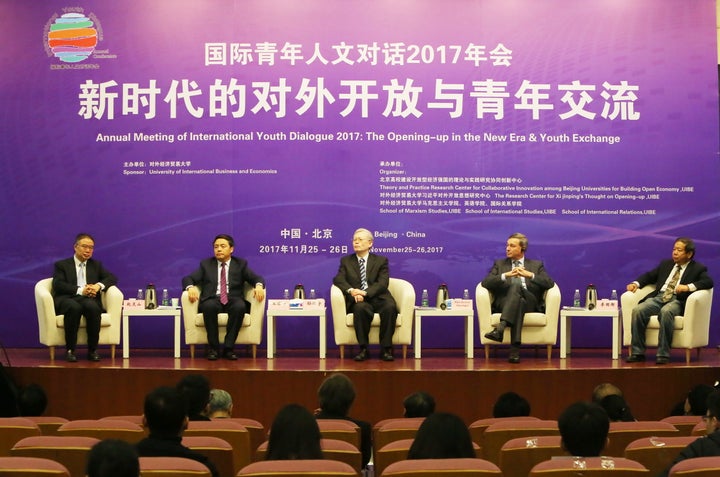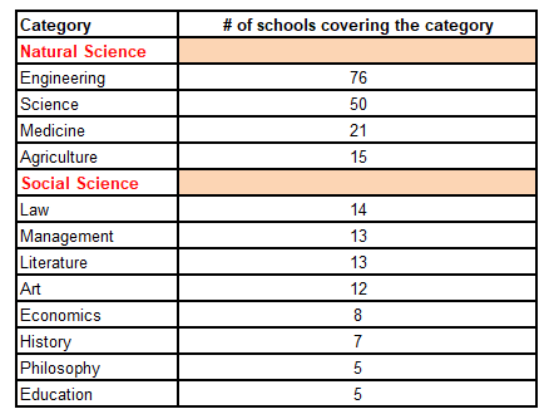Project 985. Project 211. The Double First Class Project. To most, these numbers might sound like an airline promotion or a cryptic government reference. To insiders in Chinese higher education, these are the blueprints for tertiary education policy and part of a long-term plan to improve the quality, capacity, and prestige of China’s top 100 or so universities.

Seven weeks ago, China announced a list of colleges and universities that will participate in its “Double First Class” Project, a comprehensive project to bring 42 Chinese universities and courses at another 95 Chinese institutions to a “world-class level”.

Why does this matter? The Double First Class Project will allocate 40 billion RMB ($6.04 billion USD) to these universities, opening significantly more resources for those selected. It is one of the most biggest changes to tertiary education policy in China since the mid-1990’s, when Projects 985 and 211 were launched, and many universities have already begun opening new research centers, creating new partnerships, and recruiting new faculty. The policy even made its way into Xi Jinping’s marathon address at the 19th Party Congress when he said “We will move faster to build Chinese universities into world-class universities and develop world-class disciplines.”
So how will “Double First Class” change higher education in China?
First, only 7 weeks after the announcement of the Project, Chinese universities are already embarking on new ventures. For example, the University of International Business and Economics (UIBE) in Beijing has created the Research Center on Youth Exchange, where more than 100 students have begun funded research projects, advised by professors from UIBE and 9 foreign universities. In November, the Center hosted a national conference, the International Youth Dialogue, and now has its eyes on creating a new academic journal about foreign perspectives on foreign policy under Xi Jinping. Research Center Director Wang Yuhang explained that “UIBE is special in that our role is to research China’s international economic policies, so we naturally embrace the opportunity to expand our international partnerships and programs.”
UIBE isn’t alone in moving quickly to capitalize on the Double First Class Project. Speaking to the China Daily, Xidian University President Zheng Xiaojing explained that Xidian has allocated 29 million RMB to new resources for undergraduate research and hopes to further expand its international partnerships. Shanghai International Studies University announced that it will be expanding its international partnerships and will be accelerating the implementation of a multilingual, multidisciplinary project called Multilingual+.
Second, most of the universities on the list are in second tier cities in China. Setting aside Beijing, which has an outsized number of universities relative to its population, first tier cities like Shanghai, Guangzhou, and Shenzhen received remarkably few spots on the list, with Shenzhen receiving none at all. Although second and third tier cities received the majority of the spots,the Double First Class list, while larger than its 211 and 985 predecessors, is actually more exclusive, since the number of Chinese universities has more than doubled since 1999 (China opens a new university every week, on average). Western China gained four new of spots on the list and inland provinces comprised 38% of the list, although some observers had hoped that the project would be used to further promote equal access to education, particularly for China’s rural and less prosperous areas.

Second, most of the universities on the list are in second tier cities in China. Setting aside Beijing, which has an outsized number of universities relative to its population, first tier cities like Shanghai, Guangzhou, and Shenzhen received remarkably few spots on the list, with Shenzhen receiving none at all. Although second and third tier cities received the majority of the spots,the Double First Class list, while larger than its 211 and 985 predecessors, is actually more exclusive, since the number of Chinese universities has more than doubled since 1999 (China opens a new university every week, on average). Western China gained four new of spots on the list and inland provinces comprised 38% of the list, although some observers had hoped that the project would be used to further promote equal access to education, particularly for China’s rural and less prosperous areas.
Third, the Project has a distinct focus on traditional natural sciences. Besides the fact that natural sciences tend to require more equipment and funding for each research project, this may also be a reflection of the fairly segmented nature of the Chinese higher education system: there are several universities specifically dedicated to the study of forestry, for instance. However, this seems more than happenstance. Perhaps most telling is that Double First Class Project was not just released by the education ministry: it was jointly released by the education ministry, the finance ministry, and the immensely powerful National Development and Reform Commission, lending weight to the argument that China views this education blueprint as not just another generic “five year plan”, but as a comprehensive plan for the future of its education system, its workforce, and its scientific output for the next generation.

Fourth, local governments are getting involved and matching funds in some cases. While most of the disciplines selected are in the natural sciences, the Beijing municipal government has funded the creation of ten new research centers dedicated to studying the Chinese economy and political ideology. Wang Yuhang of UIBE explains, “In 2016, the Beijing city government helped UIBE to create a different research center at our school under the banner of Double First Class, called the ‘Theory and Practice Research Center for Collaborative Innovation among Beijing Universities for Building Open Economy.’ By the time the official list came out 7 weeks ago, the local government-funded center was already conducting research projects on China's economic opening and its cultural implications, enriching our departments on the first class list.”
Fifth, the project actually provides a clear timeline, unlike 211 and 985, with benchmarks every ten years until 2050, with the ultimate goal of having many of the 42 Chinese universities break into the global top 200. According to Chinese state media outlet the People’s Daily, “Although it is not likely for China to have 42 world-class universities, it is possible to see 1 or 2 schools break into the top 20 ranking.”
Certainly this should serve as an inspiration for the West to invest more in our own education systems, but we should also view it as an opportunity to further engage with some of the brightest minds in China and advance worthy causes such as international student exchange, scientific collaboration, and cross-cultural competence.
By Gavin Newton Tanzer and David Weeks
